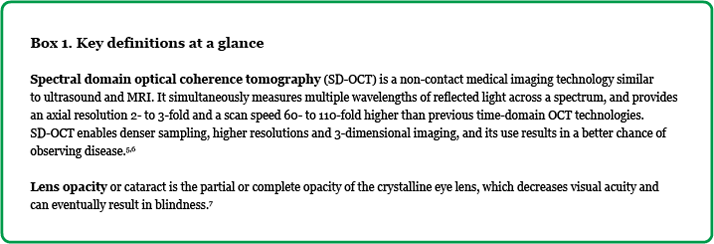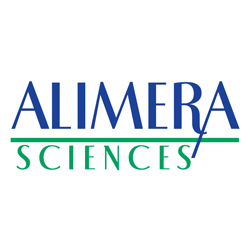
Basic science; Key data and summaries from the macula edema sessions
Educational content provided by Alimera Sciences.
The American Society of Retina Specialists (ASRS) is the largest retinal organization in the world, representing over 2,700 members from 60 countries.1 The ASRS provides a scientific forum to promote the advancement of vitreoretinal diseases and surgery. As part of their continuing medical education program, the ASRS held their Annual Scientific Meeting in Vienna in July, which included: scientific sessions, panel discussions, retina case conferences, socioeconomic updates and instructional courses. Discussion topics included surgical management of complicated retinal detachments, uveitis controversies, age-related macular degeneration, retinal vascular diseases, diabetic retinopathy, retinal imaging in the computer age, surgical techniques, pediatric retina and pharmacology.2
Here, we report on some of the sessions covering macular edema (ME). The speakers of the first two sessions, Arnab Das and Levent Karabas, were 2015 Honor Award Recipients based on their contributions through the meeting.3
Arnab Das in a session entitled “Dexamethasone Intravitreal Implant for the Treatment of Diffuse Macular Edema in Vitrectomized Eyes” presented a prospective study evaluating the safety and efficacy of dexamethasone intravitreal implant (DEX; Ozurdex®, Allergan Inc.) in the treatment of diffuse ME in 58 patients who had undergone vitrectomy as a result of diabetic retinopathy or vascular occlusion. The primary efficacy outcome was the change in central retinal thickness (CRT) from baseline to week 26 determined by spectral domain optical coherence tomography (SD-OCT).4

In this study, mean CRT at baseline was 468 μm. After eight weeks of treatment, mean CRT reduced to 274 μm (ranging from 236 μm—312 μm) but by week 26, mean CRT had increased to 412 μm (ranging from 388 μm—436 μm), (P=0.0036). The mean increase in best-corrected visual acuity (BCVA) from baseline was 9±2.6 letters at week 8 (P=0.001) and 4±2.9 letters at week 26 (P=0.048). Intraocular pressure (IOP) lowering medication was used in 20.7 percent of patients (12/58 patients), but none required surgical intervention. This study concluded that treatment with DEX led to statistically and clinically significant improvements in both CRT and BCVA at week 8 compared to week 26.4
Levent Karabas presented a session entitled “Comparison of Intravitreal Dexamethasone Implant and Triamcinolone Acetonide Treatment for Macular Edema in Vitrectomized Eyes” where he showed results of a retrospective study comparing DEX intravitreal implant to triamcinolone acetonide (TA) treatment in 42 vitrectomized eyes from 41 patients with ME, with 23 eyes receiving DEX and 19 receiving TA. Output measures centered on therapeutic duration of action, mean changes in visual acuity and central macular thickness (CMT), and rates of adverse events. Results demonstrated that DEX treatment had a longer duration of action and required fewer injections compared to TA, for the treatment of patients with ME.4
Mohammad Riazi in a session entitled “Intravitreal Bevacizumab Alone or Combined With 1 mg Triamcinolone in Diabetic Macular Edema. A Randomized Clinical Trial” presented the results of a randomized clinical trial comparing 1.25 mg intravitreal bevacizumab (IVB) monotherapy, or as part of combination treatment including 1 mg intravitreal TA, in the treatment of 52 naïve eyes with bilateral center-involving diabetic macular edema (DME). During the study, patients’ eyes were assessed every six weeks and retreated as required.4
Even though CMT decreased in both groups—IVB monotherapy group and IVB-TA combination therapy group—the CMT reduction observed at the 2- and 4-week time points was higher in the combination therapy group. More dramatic reductions in CMT were observed in patients’ eyes with a baseline measurement exceeding 500 µm. Although BCVA improved in both groups, there was no significant benefit to combination therapy after six weeks. In contrast, combination treatment resulted in increased IOP compared to monotherapy although no changes in lens opacity were observed, and combination treatment required on average fewer injections.4
Based on these results, Dr Riazi concluded that although IVB-TA combination therapy may not have resulted in long-term benefits to CMT and BCVA, the average number of injections required was reduced, and faster improvements in BCVA and CMT were observed compared to monotherapy.4
Petros Carvounis presented a session entitled “Visual and Anatomic Outcomes After Addition of Triamcinolone Acetonide to Anti-VEGF Compared to Anti-VEGF Monotherapy for Diabetic Macular Edema”, where he described a retrospective chart review study to determine visual and anatomical outcomes of TA and anti-VEGF combination therapy compared to anti-VEGF monotherapy, in patients with center-involving DME who had at least three prior anti-VEGF injections. Patient baseline characteristics were similar between the two treatment groups.4
The results in this session showed that visual acuity had improved with monotherapy after one year. In contrast, patients treated with combination therapy experienced worse visual acuity than those treated with anti-VEGF monotherapy. Combination therapy also resulted in higher rates of adverse events associated with the appearance of cataracts, increases in IOP, and a greater need for ocular anti-hypertensive medications compared to the monotherapy group. In the end, the author could find no evidence of any treatment benefits to support the adjunctive use of TA in this patient population and, therefore, suggested that such combination therapy should be avoided.4
The final presentation discussed here is a prospective, randomized, subject-masked study presented by Raj Maturi entitled “Prospective, Randomized, Subject-Masked Study of Intravitreal Bevacizumab Versus Dexamethasone Implant in the Treatment of Diabetic Macular Edema”, which compared IVB treatment to intravitreal DEX treatment in DME patients. The author presented results of 50 eyes from 45 patients, with similar baseline patient characteristics in both treatment groups.4
The results from this study showed that although visual acuity outcomes were similar between the two groups, the DEX group required fewer IVB injections. Patients administered with the highest number of anti-VEGF injections prior to trial initiation were most likely to experience improved visual acuity with DEX treatment. Similarly, those with the worst baseline visual acuity scores benefitted the most from DEX treatment. CRT declined rapidly, and stayed that way after the dexamethasone implant was given every three months. The DEX group experienced higher rates of adverse events, which included an increased requirement for IOP-lowering drops and increased cataract formation. The speaker finished by stating that treatment with DEX decreased CRT and the injection burden, but it did not always improve visual acuity.4
The ASRS will hold their next Annual Scientific Meeting in San Francisco, California, during 10–14 August, 2016.8 See https://www.asrs.org/annual-meeting for further details.
Look out for DME content developed by Alimera Sciences on this website throughout 2015. We hope it supports your knowledge of DME, and if you would like to contribute material for publication, please send your materials to dmecontenthub@hayward.co.uk, we’d be very pleased to consider your contributions.
REFERENCES 1. General information about the American Society of Retina Specialists. Available at: https://www.asrs.org/about. Accessed August 24, 2015. 2. General information about the American Society of Retina Specialists Annual Meeting 2015. Available at: https://www.eyefox.com/2686/33rd+ASRS+2015+Vienna.html. Accessed August 24, 2015. 3. List of the honor award recipients at the American Society of Retina Specialists Annual Meeting 2015. Available at: https://www.asrs.org/annual-meeting/2015-honor-award-recipients. Accessed August 24, 2015. 4. Data on File. Alimera Sciences. 5. JS Schuman, “Spectral Domain Optical Coherence Tomography for Glaucoma (An AOS Thesis”, Trans Am Ophthalmol Soc, 106, 426–458 (2008). PMID: 2646438. 6. Heidelberg engineering. Available at: http://www.heidelbergengineering.com/us/products/spectralis-models/technology/spectral-domain-oct/. Accessed August 24, 2015. 7. Right DiagnosisTM. Available at: http://www.rightdiagnosis.com/medical/lens_opacity.html. Accessed August 24, 2015. 8. General information about the American Society of Retina Specialists Annual Meeting 2016. Available at: https://www.asrs.org/annual-meeting/future-annual-meetings. Accessed August 24, 2015.
UK-ILV-MMM-0301 Date of preparation: August 2015
Founded in 2003, Alimera Sciences researches and develops innovative vision-improving treatments for chronic retinal diseases, such as diabetic macular edema (DME), dry age-related macula degeneration (AMD), and retinal vein occlusion. In 2015, Alimera Sciences partnered with The Ophthalmologist to facilitate the publication of independently created educational content surrounding DME, a serious retinal complication associated with diabetes, which is increasing in incidence with the increasing prevalence of diabetes worldwide. Published content will include articles ranging from basic science and disease processes to overviews of clinical data, different surgical procedures, comparisons of treatment options, and practical advice for managing diabetic patients. With a commitment to honesty, integrity, responsibility, candor, and trust, Alimera Sciences intend to provide educationally focused content to healthcare professionals across a wide range of topics in DME in order to both increase disease awareness and understanding, and to help improve patient outcomes. UK-ILV-MMM-0355 Date of preparation: August 2015 enquiries@alimerasciences.com

